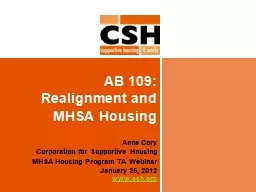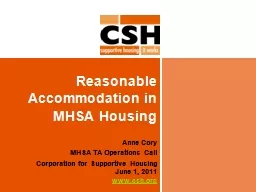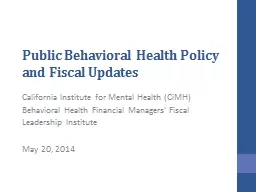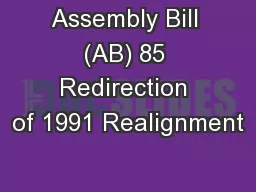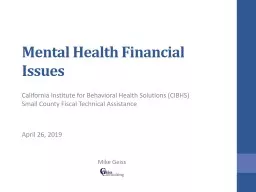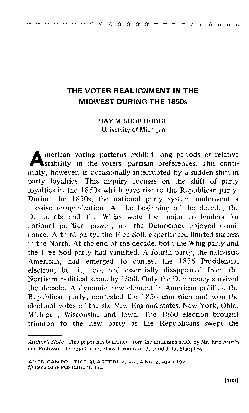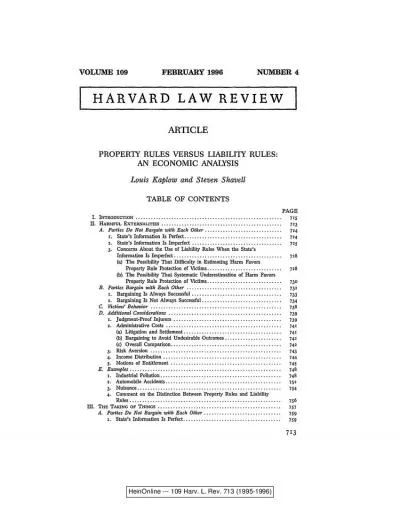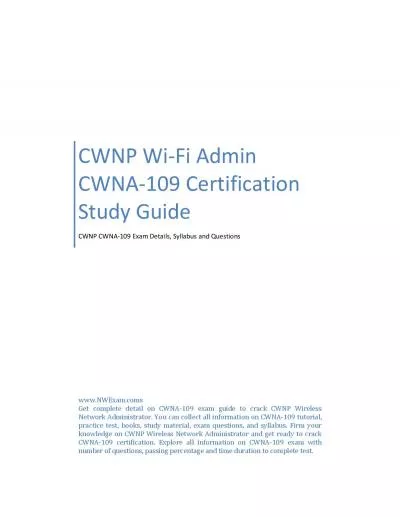PPT-AB 109: Realignment and MHSA Housing
Author : cheryl-pisano | Published Date : 2016-06-28
Anne Cory Corporation for Supportive Housing MHSA Housing Program TA Webinar January 25 2012 wwwcshorg What to Expect Today Not a full explanation of Realignment
Presentation Embed Code
Download Presentation
Download Presentation The PPT/PDF document "AB 109: Realignment and MHSA Housing" is the property of its rightful owner. Permission is granted to download and print the materials on this website for personal, non-commercial use only, and to display it on your personal computer provided you do not modify the materials and that you retain all copyright notices contained in the materials. By downloading content from our website, you accept the terms of this agreement.
AB 109: Realignment and MHSA Housing: Transcript
Download Rules Of Document
"AB 109: Realignment and MHSA Housing"The content belongs to its owner. You may download and print it for personal use, without modification, and keep all copyright notices. By downloading, you agree to these terms.
Related Documents

